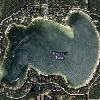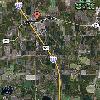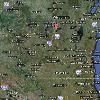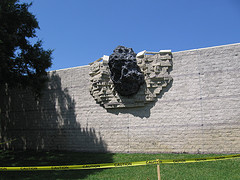
Halvey
Pleasant Lake
Steve Halversen's Happy Hollows - Lake Side Resort
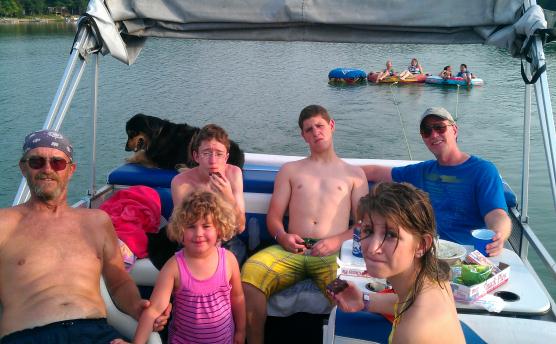
Pirate Steve
Halvey
Halvey's or Halvies Hideaway - Steve Halversen's Happy Hollows Resort - Rental Cabin, Summer Getaway is located on Pleasant Lake. A lakeside cabin with multiple bedrooms and baths great for families with children. The lakeside cabin has a dock and beach for all kinds of watercraft and beach fun. Motorized wake boating is allowed from 11-3pm daily. A freshwater lake with fishing and slow non wake boating is allowed at all times. See below for more area information:
Pleasant Lake is located near Westfield and Coloma Wisconsin.
Coloma, Wisconsin History and Attractions:
Click Picture Gallery For Large Area View
The Coloma area was first settled in 1849 by John Drake and a man named Stowe. Stowe stole lumber Drake left in the area when Drake had to leave due to a family illness. Stowe built a tavern with the timber, leaving Drake to build his tavern out of rough hewn logs.[3]
By 1875, the area was known as Ross Corners, after the local postmaster. A railroad between Stevens Point and Portage was soon built, coming through four miles to the east at a spot called Coloma Station. The post office was moved from Ross Corners to Coloma Station, and Ross Corners soon became known as Coloma Corners.[3]
A Geographic Wonder called Glover Bluff crater, a meteor crater, is located about 4 miles south of Coloma - The worlds least studied meteor impact site Glover Bluff is a meteorite crater located about 4 miles (6.4 km) south of Coloma, Wisconsin in the United States.
It is 8 kilometers (5mi) in diameter and the age is estimated to be less than 500 million years (Cambrian or younger). The crater is exposed at the surface.[1]
The Glover Bluff impact site is among the least studied in the world, in part because for years the uplifted central area has been actively quarried for dolomite beneath the moraine left by retreating glaciers. Ironically, the very evidence supporting a meteoritic impact uncovered in the quarrying process is systematically being destroyed. Such evidence includes a central bulge, dipped strata, the presence of “shatter cones” (although no longer as common as they may once have been), and, “impact breccia.” There are “red” and “yellow” varieties (more of a brick red and tan yellow) and sometimes a mixture of the two. The breccia contains many broken fragments (or shards) of quartzite and other rocks.
The majority of the crater is on private land, but the visitor can get a clear view of the
three hilly areas from Dakota Rd, 4th Rd, and 5th Rd. From the Meteorites Articles
web site: The Glover Bluff meteorite impact crater in is southeastern Wisconsin close
to Madison in Marquette County. This... from waymarking.com
Location of Coloma, Wisconsin
Coordinates: 44°1′26″N 89°32′2″W / 44.02389°N 89.53389°W / 44.02389; -89.53389Coordinates:
44°1′26″N 89°32′2″W / 44.02389°N 89.53389°W / 44.02389; -89.53389
Country United States
State Wisconsin
County Waushara
Coloma is a village in Waushara County, Wisconsin, United States. The population was 461 at the 2000 census. The village is located within the Town of Coloma.
Westfield Wisconsin
Westfield Wisconsin: Populated places in Marquette County, Wisconsin | Villages in Wisconsin | Westfield, Marquette County, Wisconsin
Westfield is a village in Marquette County, Wisconsin, United States. The population was 1,217 at the 2000 census. The village is located mostly within the Town of Westfield. A small portion extends east into the adjacent Town of Harris.
Westfield Village —
Westfield Location within the state of Wisconsin
Coordinates: 43°53′7″N 89°29′23″W / 43.88528°N 89.48972°W / 43.88528; -89.48972Coordinates: 43°53′7″N 89°29′23″W / 43.88528°N 89.48972°W / 43.88528; -89.48972
Country United States
State Wisconsin
County Marquette
Area
- Total 1.5 sq mi (3.8 km2)
- Land 1.4 sq mi (3.7 km2)
- Water 0 sq mi (0.1 km2)
Population (2000)
- Total 1,217
- Density 829.5/sq mi (320.3/km2)
Time zone Central (CST) (UTC-6)
- Summer (DST) CDT (UTC-5
Meteor CraterFrom Wikipedia, the free encyclopedia (Redirected from Meteor crater)
Jump to: navigation, search
For meteorite-created craters in general, see Impact crater.
"Barringer Crater" redirects here. For the crater on the Moon, see Barringer (lunar crater).
Meteor Crater
The Holsinger meteorite is the largest discovered fragment of the meteor that created Meteor Crater and it is exhibited in the crater visitor center.
The Barringer Meteor Crater from space. The Diablo Canyon arroyo is to the west (left). The ghost town of Diablo Canyon for which the meteorite is formally named is on the canyon just to the north and out of the picture. The bulk of the meteorite is believed to be embedded in the south side of the crater under the rim.Meteor Crater is a meteorite impact crater located approximately 43 miles (69 km) east of Flagstaff, near Winslow in the northern Arizona desert of the United States. Because the US Department of the Interior Division of Names commonly recognizes names of natural features derived from the nearest post office, the feature acquired the name of "Meteor Crater" from the nearby post office named Meteor.[2] The site was formerly known as the Canyon Diablo Crater, and fragments of the meteorite are officially called the Canyon Diablo Meteorite. Scientists refer to the crater as Barringer Crater in honor of Daniel Barringer who was first to suggest that it was produced by meteorite impact. The crater is privately owned by the Barringer family through their Barringer Crater Company,[3] which proclaims it to be "the first proven, best-preserved meteorite crater on earth."[4]
Despite its importance as a geological site, the crater is not protected as a national monument, a status that would require federal ownership. It was designated a National Natural Landmark in November 1967.[5]
Meteor Crater lies at an elevation of about 1,740 m (5,709 ft) above sea level. It is about 1,200 m (4,000 ft) in diameter, some 170 m deep (570 ft), and is surrounded by a rim that rises 45 m (150 ft) above the surrounding plains. The center of the crater is filled with 210–240 m (700–800 ft) of rubble lying above crater bedrock.[1] One of the interesting features of the crater is its squared-off outline, believed to be caused by pre-existing regional jointing (cracks) in the strata at the impact site.[6]
Contents [hide]
1 Formation of the crater
2 Discovery and investigation
2.1 Grove Karl Gilbert
2.2 Daniel Barringer
2.3 Eugene M. Shoemaker
3 Geology
4 Meteor Crater today
4.1 Recent history
5 See also
6 Notes
7 External links
Other Meteor Crater Data:
The crater was created about 50,000 years ago[7][8] during the Pleistocene epoch when the local climate on the Colorado Plateau was much cooler and damper. At the time, the area was an open grassland dotted with woodlands inhabited by woolly mammoths and giant ground sloths. It was probably not inhabited by humans; the earliest confirmed record of human habitation in the Americas dates from long after this impact.
The object that excavated the crater was a nickel-iron meteorite about 50 meters (54 yards) across, which impacted the plain at a speed of several kilometers per second. Impact energy has been estimated at about 10 megatons. The speed of the impact has been a subject of some debate. Modeling initially suggested that the meteorite struck at a speed of up to 20 kilometers per second (45,000 mph), but more recent research suggests the impact was substantially slower, at 12.8 kilometers per second (28,600 mph). It is believed that about half of the impactor's 300,000 metric tons (330,000 short tons) bulk was vaporized during its descent, before it hit the ground.[9]
The impactor itself was mostly vaporized; very little of the meteorite remained within the pit that it had excavated.[10]
[edit] Discovery and investigationThe crater came to the attention of scientists following its discovery by European settlers in the 19th century. Dubbed the Canyon Diablo crater – from Canyon Diablo, Arizona, the closest community to the crater in the late 19th century, 12 miles (19 km) northwest of the crater, but now a ghost town – it had initially been ascribed to the actions of a volcano. This was not an unreasonable assumption, as the San Francisco volcanic field lies only about 40 miles (64 km) to the west.
Aerial view of Arizona Meteor Crater, September, 2010
Looking into the crater from the north rim. The rust colored area on the far (south) rim is where the last mining for the meteorite occurred in 1929 and is believed to be the site of the bulk of the meteorite. Rock around the south rim is uplifted.[edit] Grove Karl GilbertIn 1891 Grove Karl Gilbert, chief geologist for the U.S. Geological Survey, investigated the crater and concluded that it was the result of a volcanic steam explosion. Gilbert had assumed that if it were an impact crater then the volume of the crater, as well as meteoritic material, should be present on the rim. Gilbert also assumed a large portion of the meteorite should be buried in the crater and that this would generate a large magnetic anomaly. Gilbert's calculations showed that the volume of the crater and the debris on the rim were roughly equivalent, so that the mass of the hypothetical impactor was missing. Further there were no magnetic anomalies. Gilbert argued that the meteorite fragments found on the rim were coincidental. Gilbert would publicize these conclusions in a series of lectures in 1895.[11] In 1892 Gilbert would be among the first to propose that the moon's craters were caused by impact rather than volcanism.[12]
[edit] Daniel BarringerIn 1903, mining engineer and businessman Daniel M. Barringer suggested that the crater had been produced by the impact of a large iron-metallic meteorite. Barringer's company, the Standard Iron Company, received a patent signed by Theodore Roosevelt for 640 acres (2.6 km2) around the center of the crater in 1903.[13] The claim was divided into four quadrants coming from the center clockwise from northwest named Venus, Mars, Jupiter and Saturn. In 1906 Roosevelt authorized the establishment of a newly named Meteor, Arizona post office (the closest post office before was 30 miles (48 km) away in Winslow, Arizona).
Standard Iron Company conducted research on the crater's origins between 1903 and 1905. It concluded that the crater had indeed been caused by an impact. Barringer and his partner, the mathematician and physicist Benjamin Chew Tilghman, documented evidence for the impact theory in papers presented to the U.S. Geological Survey in 1906 and published in the Proceedings of the Academy of Natural Sciences in Philadelphia.
Barringer's arguments were met with skepticism, as there was a reluctance at the time to consider the role of meteorites in terrestrial geology. He persisted and sought to bolster his theory by locating the remains of the meteorite. At the time of first discovery by Europeans, the surrounding plains were covered with about 30 tons of large oxidized iron meteorite fragments. This led Barringer to believe that the bulk of the impactor could still be found under the crater floor. Impact physics was poorly understood at the time and Barringer was unaware that most of the meteorite vaporized on impact. He spent 27 years trying to locate a large deposit of meteoric iron, and drilled to a depth of 419 m (1,376 ft), but no significant deposit was ever found.
Barringer, who in 1894 was one of the investors who made $15 million in the Commonwealth silver mine in Pearce, Arizona in Cochise County, Arizona, had ambitious plans for the iron ore.[14] He estimated from the size of the crater that the meteorite had a mass of 100 million tons.[11] The current estimate of 300,000 tons for the impactor is only three-tenths of one percent of Barringer's estimate. Iron ore of the type found at the crater was valued at the time at $125/ton so Barringer believed he was searching for lode worth more than a billion 1903 dollars.[14]
Despite Barringer's findings and other excavations in the early 20th century,[15] geologists' skepticism continued until the 1950s when planetary science gained in maturity and understanding of cratering processes increased. Professor Herman Leroy Fairchild, an early promoter of impact cratering, argued Barringer's case in an article in Science in 1930.
Eugene M. Shoemaker
Meteor craterIt was not until 1960 that later research by Eugene Merle Shoemaker would confirm Barringer's hypothesis. The key discovery was the presence in the crater of the mineral stishovite, a rare form of silica found only where quartz-bearing rocks have been severely shocked by an instantaneous overpressure. It cannot be created by volcanic action; the only known mechanism of creating it is through an impact event (or artificially through a nuclear explosion).
Shoemaker's discovery is considered the first definitive proof of an extraterrestrial impact on the Earth's surface. Since then, numerous impact craters have been identified around the world, though Meteor Crater remains one of the most visually impressive due to its size, young age and lack of vegetative cover.
[edit] GeologyThe impact created an inverted topography so that the layers immediately exterior to the rim are stacked in opposite order in which they normally occur; the impact overturned and inverted the layers to a distance of one to two kilometers outward from the crater's edge.[17] Specifically, climbing the rim of the crater from outside, one finds:
Coconino Sandstone (sandstone formed 265 million years ago) nearest the top of the rim
Toroweap Formation (limestone formed 255 million years ago)
Kaibab Formation (dolomite formed 250 million years ago)
Moenkopi Formation (mudstone formed 200 million years ago) nearest the outer foot of the rim
Meteor Crater today
Closeup of old mine shaft at the bottom of the crater. Note astronaut cutout and flag attached to fence (inset) full size imageMeteor Crater is today a popular tourist attraction privately owned by the Barringer family, with an admission fee charged to see the crater. The Meteor Crater Visitor Center on the north rim features interactive exhibits and displays about meteorites and asteroids, space, the solar system and comets. It features the American Astronaut Wall of Fame, and such artifacts on display as an Apollo boilerplate command module (BP-29), a 1,406 pound meteorite found in the area, and meteorite specimens from Meteor Crater that can be touched. Formerly known as the Museum of Astrogeology, the Visitor Center includes a movie theater, a gift shop, and observation areas with views inside the rim of the crater. Guided tours of the rim are offered daily.
The crater continues to be a focus for scientific research.
Recent history
Meteor Crater, 2010.During the 1960s, NASA astronauts trained in the crater to prepare for the Apollo missions to the Moon.[18]
On August 8, 1964, a pair of commercial pilots in a Cessna 150 flew low over the crater. On crossing the rim, they could not maintain level flight. The pilot attempted to build up speed by circling in the crater to climb over the rim. During the attempted climb out, the aircraft stalled, crashed, and caught fire. It is commonly reported that the plane ran out out of fuel, but this is incorrect. Both occupants were severely injured but survived their ordeal.[19] A small portion of the wreckage not removed from the crash site remains visible to this day.[20]
The crater was used as the setting in the 1984 science fiction film Starman.[21]
The crater is used in the game Civilization V as a natural wonder that the player can find.
[edit] See alsoImpact event
List of impact craters on Earth
[edit] Notes1.^ a b "Barringer". Earth Impact Database. University of New Brunswick. http://www.passc.net/EarthImpactDatabase/barringer.html. Retrieved 2008-12-30.
2.^ J. P. Barringer's acceptance speech. Meteoritics, volume 28, page 9 (1993). Retrieved on the SAO/NASA Astrophysics Data System
3.^ "Barringer Meteorite Crater * Meteorites Craters and Impacts". Barringercrater.com. http://www.barringercrater.com/about/. Retrieved 2010-03-16.
4.^ "Meteor Crater". Meteor Crater. http://www.meteorcrater.com/index.php. Retrieved 2010-03-16.
5.^ NPS NNL Summary
6.^ Shoemaker, Eugene M.; and Susan W. Kieffer (1979). Guidebook to the Geology of Meteor Crater, Arizona. Tempe, Arizona: Center for Meteorite Studies, Arizona State University. p. 45.
7.^ Roddy, D. J.; and E. M. Shoemaker (1995). "Meteor Crater (Barringer Meteorite Crater), Arizona: summary of impact conditions". Meteoritics 30 (5): 567.
8.^ Nishiizumi, K.; et al. (1991). "In situ 10Be-26Al exposure ages at Meteor Crater, Arizona". Geochimica et Cosmochimica Acta 55 (9): 2699–2703. doi:10.1016/0016-7037(91)90388-L.
9.^ a b Melosh HJ, Collins GS (2005). "Planetary science: Meteor Crater formed by low-velocity impact". Nature 434 (7030): 157. doi:10.1038/434157a. PMID 15758988.
10.^ Schaber, Gerald G. "A Chronology of Activities from Conception through the End of Project Apollo (1960–1973)", 2005, U.S. Geological Survey Open-File Report 2005-1190. (PDF)
11.^ a b The Science: What is the Barringer Meteorite Crater?
12.^ "NASA – Moon". Nasa.gov. http://www.nasa.gov/worldbook/moon_worldbook.html. Retrieved 2010-03-16.
13.^ Barringer, B. (December 1964). "Daniel Moreau Barringer (1860-1929) and His Crater (the beginning of the Crater Branch of Meteoritics)". Meteoritics (Meteoritical Society) 2 (3): 186. Bibcode 1964Metic...2..183B.
14.^ a b A Grand Obsession – Daniel Moreau and His Crater by Nancy Southgate and Felicity Barringer – Barringer Crater Co (2002)
15.^ "Progress in Wide Search for Meteor". June 25, 1928. http://news.google.com/newspapers?id=OtMlAAAAIBAJ&sjid=F_gFAAAAIBAJ&pg=6076,7026926. Retrieved 2010-07-13.
16.^ Fairchild HL (1930). "Nature and fate of the Meteor Crater bolide". Science 72 (1871): 463–466. doi:10.1126/science.72.1871.463. PMID 17800007.
17.^ Basic Stratigraphy of Barringer Meteor Crater. Retrieved April 12, 2009.
18.^ Apollo Lunar Training, Days of Archives exhibit, Northern Arizona University
19.^ ASN Wikibase Occurrence # 69872, Aviation Safety Network
20.^ Plane Crash At Meteor Crater Revisited, Sept. 1, 2008 Meteorite-times.com
21.^ Filming locations for Starman, IMDB.com
[edit] External links Wikimedia Commons has media related to: Barringer Crater
Barringer Crater official site
Meteor Crater Visitor Center – official site
Impact Meteor Crater Viewer Google Maps Page with Locations of Meteor Craters around the world
CNN: New computer analysis shows that the meteor may have been traveling more slowly than previously thought
Computer generated movie based on satellite imagery and topography data
Aerial Exploration of the Barringer Structure
Herman Leroy Fairchild: An Early Promoter and Defender of Meteorite Impact Cratering – includes details of early investigations into Meteor Crater
National Natural Landmarks Program: Barringer Meteor Crater
3 Dimensional stereoscopic image pair of the Barringer Crater by Volkan Yuksel (arranged for crossed-eye viewing technique)
Guidebook to the Geology of Barringer Meteorite Crater, Arizona (a.k.a. Meteor Crater)
[hide]v · d · eImpact cratering on Earth
Geology Lists Worldwide · Africa · Antarctica · Asia · Australia · Europe · North America · South America · by country
Confirmed
≥20 km diameter Acraman · Amelia Creek · Araguainha · Beaverhead · Boltysh · Carswell · Charlevoix · Chesapeake Bay · Chicxulub · Clearwater East & West · Gosses Bluff · Haughton · Kamensk · Kara · Karakul · Keurusselkä · Lappajärvi · Logancha · Manicouagan · Manson · Mistastin · Mjølnir · Montagnais · Morokweng · Nördlinger Ries · Obolon' · Popigai · Presqu'île · Puchezh-Katunki · Rochechouart · Saint Martin · Shoemaker · Siljan · Slate Islands · Steen River · Strangways · Sudbury · Tookoonooka · Vredefort · Woodleigh · Yarrabubba
Topics breccia · coesite · complex crater · ejecta blanket · impact crater · impact structure · impactite · K–T boundary · lechatelierite · meteorite · moldavite · planar deformation features · shatter cone · shock metamorphism · shocked quartz · stishovite · tektite
Research Earth Impact Database · Eugene Shoemaker · Impact Field Studies Group · Lunar and Planetary Institute · planetary science
Astronomy Surveys Catalina Sky Survey · impact event · LINEAR · meteoroid · NASA NEAT · Near-Earth Object (NEO) · Orbit@home · Palermo Scale · Sentry · Spacewatch · Torino Scale · WISE
Defense Asteroid mitigation strategies · B612 · Spaceguard
Categories: Earth Impact Database | Impact craters of the United States | Geography of Arizona | National Natural Landmarks in Arizona | Pleistocene impact craters | Visitor attractions along U.S. Route 66 | Museums in Navajo County, Arizona | Science museums in Arizona | Natural history museums in Arizona | Geography of Navajo County, Arizona | Visitor attractions in Navajo County, Arizona

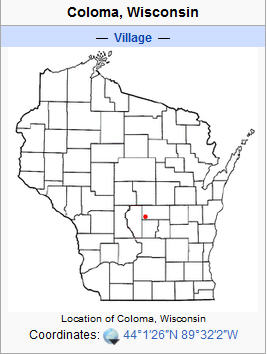
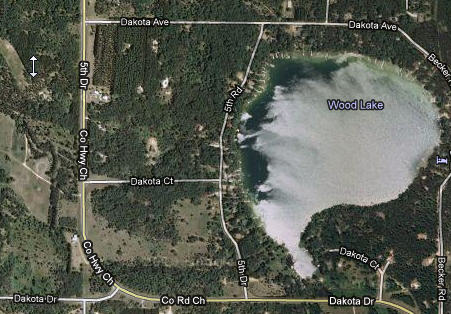
North Ridge of Glover Bluff Impact
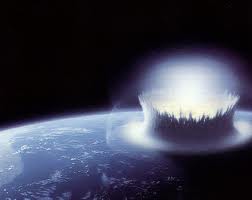
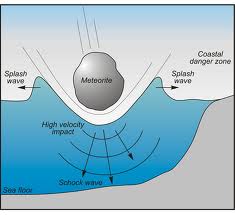
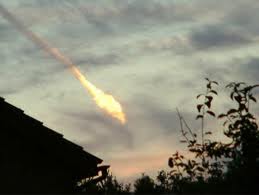
Meteor Impact
Zone
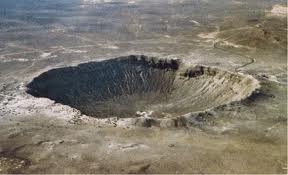
Example Meteor Crater in Arizona
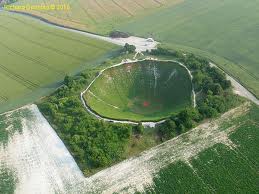
As existential risks go, a meteor strike is rather different to the others – statistically less likely to happen (or so we hope), but fast and utterly devastating of it does. Keep watching the skies, people…

